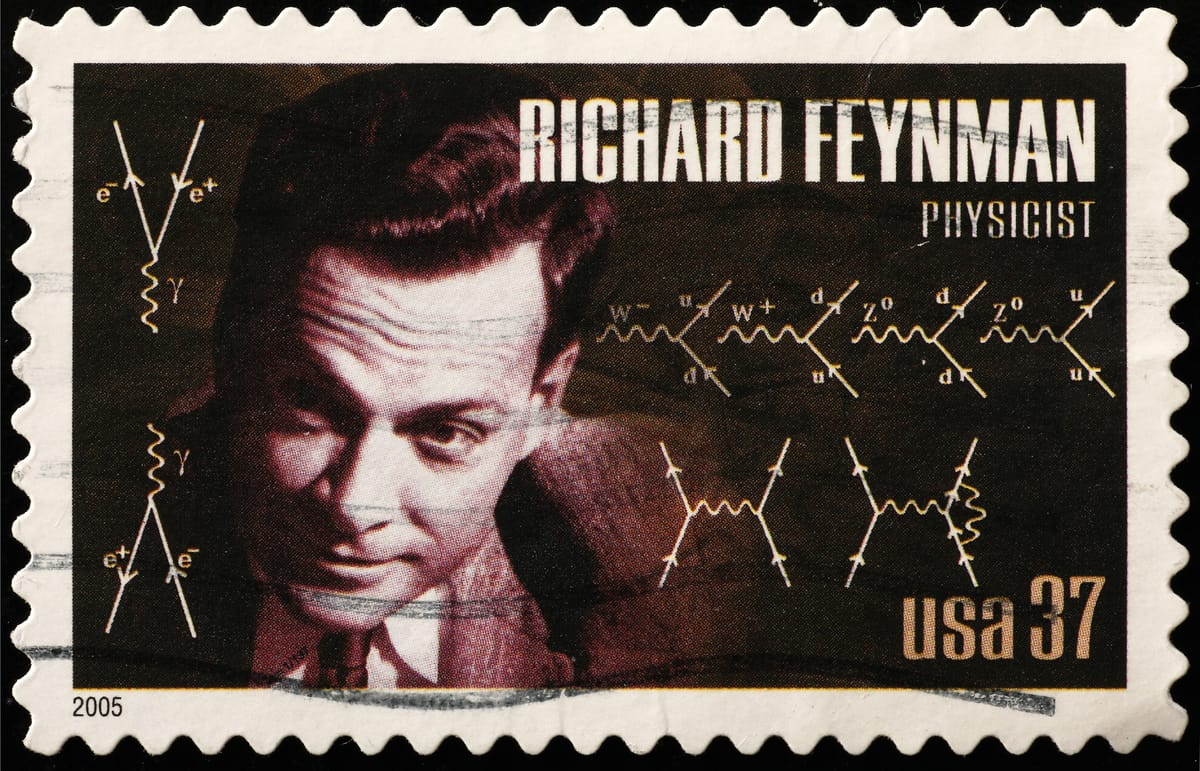The Plenty of Room that Feynman Saw at the Bottom

Understanding quantum mechanics - a study of the behavior of atomic particles - has become a priority for me after I started research on quantum readout circuits. Search for material led me back to Richard Feynman’s lectures which I had set aside during my junior college years, never imagining I will pick it back up decades later.
Freeman Dyson, noted British physicist and colleague, who closely watched Feynman’s intensity in figuring out the workings of nature with pictures and diagrams, describes listening to him akin to swimming in a deluge. Hoping to vicariously experience that immersive experience, I wish to reminisce about one of Feynman’s talks, delivered on 29 December 1959 to the American Physical Society at Pasadena, where he discussed the enormous possibilities of nanotechnology.
Nanotechnology, the science of manipulating and controlling things at small scale has endless applications today. However, in 1959, the field did not exist. As we know now, Feynman’s vision on developing miniaturized structures to retain information and perform computations not only came true but became so pervasive our lives. Feynman, could see very clearly that there is plenty of room at the bottom, meaning a lot can be done at the atomic scale, as he articulated the feasibility of nanotechnology using nothing more than basic arithmetic.
In his signature relaxed and personal style Feynman opened the talk by asking if the 24 volumes of Encyclopedia Britannica could be written on a pin’s head. He reasoned that if a pin’s head is sixteenth an inch in diameter, then 25,000 times the area of the pin’s head equals the area of all the pages in the encyclopedia. Therefore, if printing can be shrunk down 25,000 times in scale the encyclopedia will fit on a pin head. So far, so good.
Printing a miniature encyclopedia is useful, only if we can read it back. In other words, we must be able to engrave patterns on the nail-head such that they are discernable when magnified. For instance, at the miniature scale, the letter ‘e’ should be distinguishable from ‘n’, ‘c’ or others in the word ‘encyclopedia’ if we were to engrave it and then read it back without losing detail.
The encyclopedia used to be printed using a method called half-tone technique, where characters are broken into a series of dots to create its pattern. At miniature scale, for a letter to be distinguishable from another, the area at of smallest of the dots shrunk by 25,000 times must be at least greater than that of a single atom as we cannot have a dot that is smaller than the smallest unit of matter - the atom. Feynman reasons that the smallest dot when scaled down will still have enough area to occupy around 1000 atoms, showing that the miniature encyclopedia can be magnified to recreate the original material.
With the same technique, at the same scale of demagnification, Feynman further reasons that all the books in the world can be printed on a million pinheads, equivalent in area to just 35 pages of the Encyclopedia Britannica. And that is clear evidence that there is room at the bottom.
Now, Feynman further reasons that rather than simply miniaturizing the letters, by coding each letters using dots and dashes, aiming on reducing the area required for each letter, all the books in the world can be written down in a cube, one-two-hundredth of an inch wide. The only difference is that instead of just using the surface, the area inside has to be used as well. Undoubtedly, there is PLENTY of room at the bottom, justifying the title that Feynman chose for the talk.
Feynman further considers computations at the atomic scale. Anticipating that computers would have to be significantly more powerful than those available then and considering how big the computers have to get with the technology available then, he discusses the possibility of building computers made of little wires, and little elements, say 10 to 100 atoms worth in size. Not only such computers will take less raw material to make, consume less energy thus producing less heat, while being fast as information need not travel far within the system. We now live in an era, where very powerful computers built at a miniature scale sit in our pockets and backpacks in the form of smart phones and personal computers.
What an insight! Without complex mathematics or esoteric theorems Feynman explains that nanotechnology is feasible, and also incredibly useful, laying the groundwork for countless future innovations that we see today. As I marvel at Feynman’s discourse, I realize I am a professional explorer of the plenty of room that exists at the bottom, as I work on circuits and systems that read out quantum bits.
Reference: